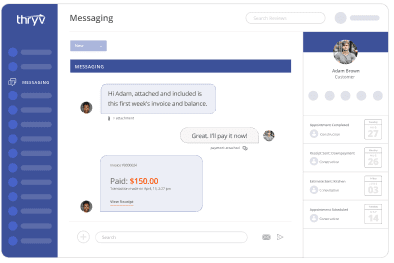Like it or not, seasonality impacts every small business. Whether it’s the ebbs and flows of changing seasons or the highs and lows of the holidays – skipping out on seasonal marketing is a miss your business can’t afford.

In the Trades: The
Ultimate Marketing
Guide
Tactics and checklists to help your home services business stand out in the crowd.
What is Seasonal marketing?
Seasonal marketing promotes your services or products during specific times of the year.
For example, summer months may provide marketing opportunities that pertain to warmer weather or time off. You can also focus on holidays like Halloween and Valentine’s Day, as well as traditional December holidays. Another option is to concentrate on seasons relevant to your industry. For instance, salons can focus on wedding seasons, while accountants can boost business during the post-tax-season lull.
The benefits of a seasonal approach to your marketing efforts are abundant. It can help keep your business at the forefront of customers’ minds all year and increase sales during those slower months.
Examples of Seasonal Marketing Campaigns
Sara Toftegaard is the founder and designer for Toftegaard Design, crafting exterior home & garden design plans that, as she explains, “are rooted in sustainability and wellness.”
Building a Seasonal Gifting Progam
While Florida is warm all year round, exterior landscaping and design aren’t necessarily booming in winter. An example of seasonal marketing done right is the “Toftegaard’s Bouquet of Referrals: Planting Seeds of Design” campaign.
“I started at the end of December, and that was to get my friends and family thinking about my business and how they can promote me, but also give them a gift in exchange.”
The campaign was simple. “Any time someone refers me to a friend or family member who hires me for a consultation, I will give them a bouquet from my local florist or a plant from a local vendor.”
Key features of this campaign that impact her business include:
- Timeliness: Starting this campaign at the end of December aligns well with the following spring season in the U.S., where Toftegaard is based. Many homeowners begin thinking about landscaping projects in spring, so it’s a strategic time to plant the seed of awareness – pun intended – for the business before the busy season begins.
- Customer Incentives: Offering a gift to people who refer friends and family encourages word-of-mouth marketing. Plus, people might be more likely to recommend a business when they know there’s something in it for them.
- Value-Added Service: Providing a gift as a token of appreciation for referrals adds value to the customer experience. It’s a way to go above and beyond in customer service and show gratitude for their support.
In addition to growing her business and providing value to her customers, this campaign matched Toftegaard’s ethos. “I always want to promote local. So, it’s a way to promote my business and keep people thinking about other local businesses they can support.”
Diversification as a Seasonal Strategy
Toftegaard has also found that maintaining customer loyalty is best achieved through service diversification and tailoring services to meet customer needs.
“Being a small business allows me to readily adjust to my clients’ requirements, prompting me to innovate with new service options. Take, for instance, a client who expressed the frustrations of dealing with multiple points of contact for a project or maintenance.”
In response, she has introduced a VIP service tailored for past clients. This service includes ongoing project management, a maintenance schedule, and the option for seasonal additions if desired.
For more insights from Toftegaard on running and managing seasonal businesses, sign up for our webinar on May 2.

How to Create a Seasonal Marketing Campaign
Now that you’ve seen seasonal marketing strategies in action, let’s break down five steps to building your campaign.
1. Understand Your Customers
Take time to know your customers’ needs, challenges, and questions to tailor your campaign effectively.
2. Choose the Right Seasonal Focus
Select a seasonal opportunity or holiday that resonates with your brand and target audience.
3. Create Compelling Content
Craft captivating content that highlights your unique offerings, addresses customer needs, and delivers genuine value through storytelling and visuals. Remember to include a strong call to action.
4. Start Early and Promote on Various Channels
Launch your campaign ahead of time to build anticipation and momentum. That helps ensure you’re not coming in late to the seasonal party. Plus, sharing your content across various marketing channels like social media, email, and your website will allow maximum reach and engagement.
5. Monitor and Adjust
Keep track of key performance indicators like website traffic, sales, and any feedback customers might share to assess your campaign’s effectiveness. Make necessary adjustments in real-time to optimize results and enhance future campaigns.
Launching a seasonal marketing campaign may seem daunting, but with these five steps in your arsenal, you’re well-equipped to make a splash and leave a lasting impression on your audience.

The Guide to Winning More Business Online
Download



